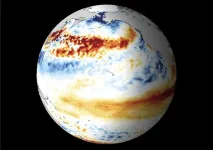Dexamethasone is one of the most important drugs in the treatment of severe COVID-19, but patients respond very differently to the therapy. Researchers at the German Center for Neurodegenerative Diseases (DZNE) and Charité – Universitätsmedizin Berlin have now discovered how the cortisone compound influences the impaired inflammatory response and which patients benefit from it. Their method uses so-called single-cell analyses and raises hopes for a precise prediction tool for other therapies and diseases as well. The findings have been published in the scientific journal Cell.
It has long been puzzling why certain drugs work so well for some people and fail to work at all for others. Researchers at DZNE and Charité – Universitätsmedizin Berlin have now tested a method that allows to uncover the underlying molecular mechanisms more precisely than before. For their study, they investigated the molecular effect of dexamethasone in patients with severe COVID-19, who responded differently to treatment with the drug.
Using so-called single-cell analyses, they discovered that a certain type of immune cells is responsible for the completely contrary reactions. They also identified a way of predicting early in the treatment whether it will work for the respective person. The tested approach could also be useful in the therapy of other diseases.
Monocytes indicate course of therapy
At the beginning of the coronavirus pandemic, it became apparent that the immune system of people with a severe course of the disease often reacts excessively to the virus. They were therefore given dexamethasone, a cortisone derivative that is used to treat numerous diseases in order to influence the immune system. In many patients, treatment with dexamethasone resulted in rapid improvement. However, in other individuals, condition remained critical, sometimes even worsening and leading to death. The current study results now reveal how the drug works in those cases where the therapy is effective.
“Our data show that the life-saving effect of dexamethasone is linked to the reaction of so-called monocytes,” says Dr. Anna Aschenbrenner from DZNE, who lead the study together with Prof. Dr. Florian Kurth from Charité and other colleagues. Monocytes belong to the white blood cells and constitute a central component of the immune system. “Some of the monocytes showed a response to the treatment – but only in those individuals whose condition improved with the therapy and who ultimately survived the infection,” says Aschenbrenner. “Why the monocytes show this reaction in some patients and not in others is a mystery. However, it is also known from other diseases that dexamethasone does not work equally well in all people.”
Altered signature
Already in 2020, in one of the first studies on the immune response in people with severe COVID-19, the researchers from Bonn and Berlin found an altered, pathological monocyte “signature” – in simple terms, this is a kind of molecular fingerprint that reflects the characteristics of these immune cells. Dexamethasone treatment reversed these changes when therapy was effective, as shown in the current study. “The response of the monocytes precedes the improvement in health status by several days,” says Florian Kurth from Charité’s Department of Infectious Diseases and Critical Care Medicine. “Thus, if the immune cells respond to dexamethasone at an early stage, we can anticipate that the treatment will work. If the cells do not respond, meaning that the therapy will have no effect, we can use additional medications to help the affected individuals.” However, further research is needed before the new method can be used in clinical practice.
The researchers were able to elucidate these processes with the help of single-cell sequencing. “This method allows for the individual characterisation of every single cell. Analysing cell signatures in such detail provides insights into the organism that were not possible just a few years ago”, says Prof. Dr. Joachim Schultze, Director for Systems Medicine at DZNE and also one of the study’s lead authors. Using single-cell sequencing, the researchers studied blood samples from people who were treated with dexamethasone at Charité due to severe COVID-19 disease. Early in the pandemic, these samples had been systematically collected at various times during disease progression. Their analysis revealed that the reaction of the monocytes was an indicator of the future course of therapy.
New approach for targeted drug development
“The significance of our results goes far beyond COVID-19,” says Prof. Dr. Leif Erik Sander, also one of the study’s principal investigators. He is Director of Charité’s Department of Infectious Diseases and Critical Care Medicine and research group leader at the Berlin Institute of Health at Charité (BIH). “The combination of cleverly designed clinical trials and high-resolution molecular analysis can provide crucial insights into the working of medicines. Already in the early stages of testing new drugs, this approach could identify factors that predict response to therapy”. In the future, this could speed up drug development and enable personalised therapies.
“I assume that this approach can also be transferred to other diseases,” says Florian Kurth. “Depending on the specific disease and therapy, there will be different cells serving as indicators. As soon as they are identified using single-cell sequencing, simpler laboratory methods that are already established will be sufficient to determine the relevant cellular changes.”
In research, this approach is referred to as “companion diagnostics” – the simultaneous accompanying of a therapy with molecular analyses. Anna Aschenbrenner sees the application of the method particularly in infectious diseases: “Here, immune cells play a key role and they are easily accessible via blood samples. But there is also potential for non-infectious diseases with systemic effects, which ultimately affect the entire organism. Because diseases such as cancer or even Alzheimer’s can also be reflected in the immune cells of the blood.”
--
About the Deutsches Zentrum für Neurodegenerative Erkrankungen, DZNE (German Center for Neurodegenerative Diseases)
DZNE is a research institute for neurodegenerative diseases such as Alzheimer’s, Parkinson’s and ALS, which are associated with dementia, movement disorders and other serious health impairments. To date, there are no cures for these diseases, which represent an enormous burden for countless patients, their families and the healthcare system. The aim of DZNE is to develop and translate into practice novel strategies for prevention, diagnosis, care and treatment. DZNE comprises ten sites across Germany and collaborates with numerous universities, university hospitals, research centers and other institutions in Germany and throughout the world. It is state-funded and a member of the Helmholtz Association and of the German Centers for Health Research. www.dzne.de/en
About Charité – Universitätsmedizin Berlin
Charité – Universitätsmedizin Berlin, a cutting-edge medical institution, is a leader in diagnosis and treatment, with a special focus on severe, complex, and rare diseases and health conditions. A medical school and university medical center in one, Charité has earned an outstanding reputation worldwide, combining first-class patient care with excellence in research and innovation, state-of-the-art teaching, and high-quality training and education. At Charité, people and their health come first. Charité is dedicated to transformative translational research, applying the very latest scientific findings to prevention, diagnostics, and treatment and harnessing clinical observations to develop new lines of research and scientific questions. Charité’s foremost goal is to actively help shape the medicine of the future, all with one aim in mind: improving patients’ lives and quality of life. www.charite.de/en
END





